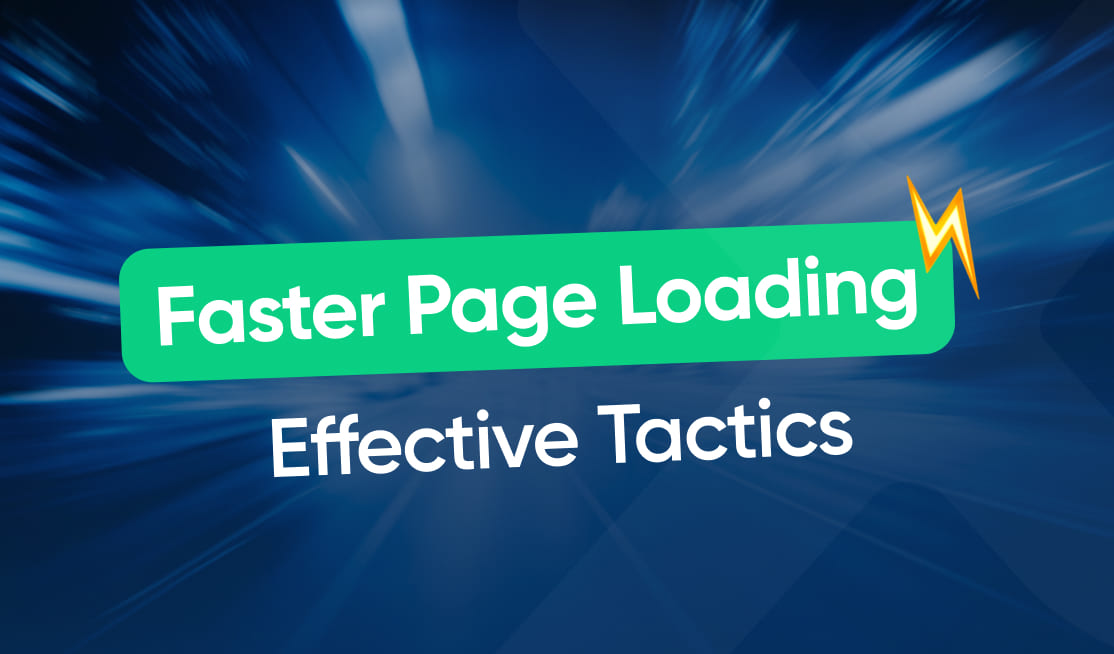
In today’s fast-paced digital world, website visitors have high expectations when it comes to page speed. A slow-loading website can lead to frustration, high bounce rates, and ultimately lost revenue. This is why optimizing page speed has become crucial for businesses and website owners. In this article, we will explore various techniques that can help improve page speed, ensuring a smooth and seamless user experience.
Understanding the Importance of Page Speed
Before we dive into the techniques, let’s first understand why page speed is so important. The impact of page speed on user experience cannot be overstated. Research has shown that visitors tend to abandon websites that take more than a few seconds to load. In fact, even a one-second delay in page load time can cause a significant drop in conversion rates. Therefore, it is imperative to prioritize page speed optimization in order to retain and engage website visitors.
The Impact of Page Speed on User Experience
When a website loads quickly, users are more likely to stay and explore its content. On the other hand, a slow website can frustrate visitors, leading to a negative user experience. Slow load times can result in higher bounce rates, lower engagement, and decreased customer satisfaction. Therefore, to provide the best experience for your users, it is crucial to optimize your website’s page speed.
Imagine a scenario where a potential customer visits your website to make a purchase. They are excited about your product and ready to buy. However, when they click on the link to your product page, it takes forever to load. Frustration starts to build up, and they begin to question whether they should continue with the purchase. Eventually, they decide to abandon your website and look for alternatives. This is a missed opportunity for your business, all because of slow page speed.
On the other hand, let’s consider a different scenario. A user visits your website and is immediately impressed by how quickly it loads. They navigate through your pages effortlessly, finding the information they need and engaging with your content. This positive experience not only increases the chances of them making a purchase but also encourages them to return in the future. By prioritizing page speed optimization, you can create a seamless and enjoyable user experience that keeps visitors coming back for more.
How Page Speed Influences SEO Rankings
In addition to user experience, page speed also plays a crucial role in search engine optimization (SEO). Search engines, such as Google, consider page speed as an important factor when determining search rankings. Websites that load quickly are more likely to rank higher in search engine results, leading to increased organic traffic. Therefore, optimizing your page speed not only improves user experience but also helps boost your website’s visibility in search engine rankings.
Search engine optimization is all about making your website more visible to potential customers. When your website ranks higher in search results, it becomes more likely to be clicked on and visited. By optimizing your page speed, you are not only improving the user experience but also increasing the chances of your website being discovered by a wider audience.
Furthermore, search engines prioritize websites that provide a fast and efficient browsing experience. They understand that users value websites that load quickly and are more likely to engage with them. Therefore, by optimizing your page speed, you are aligning your website with the preferences of search engines, making it more likely to be rewarded with higher rankings.
It’s important to note that page speed is just one of many factors that search engines consider when ranking websites. However, it is a factor that you have control over and can directly impact. By investing time and effort into optimizing your page speed, you are taking a proactive step towards improving your website’s overall SEO performance.
Fundamental Elements Affecting Page Speed
Now that we understand the importance of page speed, let’s explore the fundamental elements that can affect it. By addressing these factors, we can lay a solid foundation for improving page speed.
Page speed is a critical factor in determining the success of a website. Users expect fast-loading pages, and if a site takes too long to load, they are likely to abandon it and move on to a competitor’s site. Therefore, it is crucial for website owners and developers to optimize their sites for speed.
Role of Web Hosting in Page Speed
Your choice of web hosting provider can have a significant impact on your website’s page speed. Opting for a reliable and fast web hosting service is essential for delivering content quickly to your users. Choosing a hosting provider that offers SSD storage, robust server infrastructure, and optimized caching mechanisms can greatly improve your website’s page speed.
SSD storage, or solid-state drive storage, is faster and more reliable than traditional hard disk drives. It allows for faster data retrieval, resulting in quicker loading times for your website. Additionally, a robust server infrastructure ensures that your website can handle a high volume of traffic without experiencing slowdowns or crashes. Finally, optimized caching mechanisms store frequently accessed data closer to the user, reducing the time it takes to retrieve information and improving page speed.
Impact of Images and Media Files
Images and media files are often the largest components of a web page. High-resolution images and uncompressed media files can significantly slow down website loading times. To mitigate this, it is essential to optimize images by compressing them without compromising visual quality. Additionally, leveraging appropriate file formats and implementing lazy loading techniques can further enhance page speed.
Compressing images involves reducing their file size without sacrificing image quality. This can be achieved through various techniques, such as using image compression tools or optimizing images for the web. By reducing the file size of images, you can significantly improve page load times.
Choosing the right file format for your images is also crucial. For example, using the JPEG format for photographs and the PNG format for graphics with transparency can help reduce file sizes and improve page speed. Additionally, implementing lazy loading techniques allows images to load only when they are visible to the user, reducing the initial page load time.
The Effect of Code Minification
The size and complexity of your website’s code can also impact page speed. Code minification is a technique that removes unnecessary characters, spaces, and comments from your HTML, CSS, and JavaScript files, reducing their file size. Smaller file sizes result in faster loading times, helping improve your website’s page speed.
Code minification involves removing any unnecessary elements from your code, such as extra spaces, line breaks, and comments. This process reduces the overall file size of your code, making it easier and faster for browsers to download and interpret. By minimizing the size of your code, you can significantly improve page speed and enhance the user experience.
In addition to code minification, other techniques such as code splitting and bundling can also help improve page speed. Code splitting involves breaking down your code into smaller, more manageable chunks, allowing for faster loading of specific sections of your website. Bundling, on the other hand, combines multiple files into a single file, reducing the number of requests made by the browser and improving page load times.
In conclusion, optimizing page speed requires addressing various fundamental elements. By choosing a reliable web hosting provider, optimizing images and media files, and implementing code minification techniques, you can significantly improve your website’s page speed. Remember, a faster website not only enhances the user experience but also contributes to higher search engine rankings and increased conversions.
Techniques to Enhance Page Speed
Now that we have addressed the fundamental elements affecting page speed let’s explore some techniques to enhance it further.
Optimizing Images for Faster Loading
As mentioned earlier, optimizing images is crucial for improving page speed. Utilizing image compression tools, resizing images to appropriate dimensions, and leveraging modern image formats like WebP can significantly reduce image file sizes without compromising quality. By implementing these techniques, you can ensure faster loading times for your website’s images.
Leveraging Browser Caching
Browser caching allows web browsers to store certain resources, such as images, CSS, and JavaScript files, locally on a user’s device. By setting appropriate cache-control headers, you can dictate how long these resources should be stored in the browser’s cache. Leveraging browser caching can result in faster subsequent visits as the browser can retrieve cached resources instead of requesting them from the server, reducing loading times.
Implementing Content Delivery Network (CDN)
A Content Delivery Network (CDN) is a geographically distributed network of servers that stores copies of your website’s static content. By using a CDN, you can deliver static files, such as images, CSS, and JavaScript, from servers located closer to your users. This reduces the distance data has to travel, resulting in faster loading times. Implementing a CDN can significantly enhance your website’s page speed, especially for users accessing your site from different regions.
Tools for Testing and Monitoring Page Speed
Now that we have covered techniques to enhance page speed, let’s explore some essential tools for testing and monitoring page speed performance.
Google's PageSpeed Insights
Google’s PageSpeed Insights is a free tool that offers valuable insights into your website’s page speed performance. By analyzing your website’s URL, it provides suggestions to improve page speed and highlights areas that need optimization. Using this tool, you can gain valuable insights and make data-driven decisions to enhance your website’s page speed.
GTmetrix Speed Test Tool
GTmetrix is a powerful speed testing tool that provides comprehensive insights into your website’s performance. It analyzes your website from various locations and provides detailed reports on various performance metrics, including page speed, load times, and optimization scores. By using GTmetrix, you can identify opportunities to optimize your website’s page speed and continuously monitor performance.
Regular Maintenance for Sustained Page Speed
Now that we have covered various techniques and tools to improve page speed, it is essential to understand the importance of regular maintenance to sustain optimal performance.
Regularly Updating Website Elements
Keeping your website’s elements, such as plugins, themes, and CMS, up to date is crucial for maintaining optimal page speed. Developers regularly release updates that address performance issues, security vulnerabilities, and introduce optimizations. By applying these updates on a regular basis, you can ensure that your website remains optimized for page speed.
The Need for Regular Speed Tests
Speed tests should be performed regularly to monitor your website’s page speed. By conducting regular speed tests, you can identify any performance regressions, detect bottlenecks, and take appropriate measures to optimize your website’s page speed. Regular speed tests help ensure that your website consistently delivers a fast and seamless user experience.
Importance of Deleting Unused Plugins and Themes
Unused plugins and themes can introduce unnecessary bloat and code complexity, impacting your website’s performance negatively. It is essential to periodically review and delete any plugins or themes that are no longer in use. By doing so, you can reduce the load on your website and improve its overall page speed.
In conclusion, improving page speed is crucial for providing a seamless user experience and boosting search engine rankings. By addressing fundamental elements, implementing techniques, and regularly monitoring performance, you can significantly enhance your website’s page speed. Remember, speed optimization is an ongoing process, and staying proactive in maintaining page speed will ensure that your website continues to deliver optimal performance and user satisfaction.


